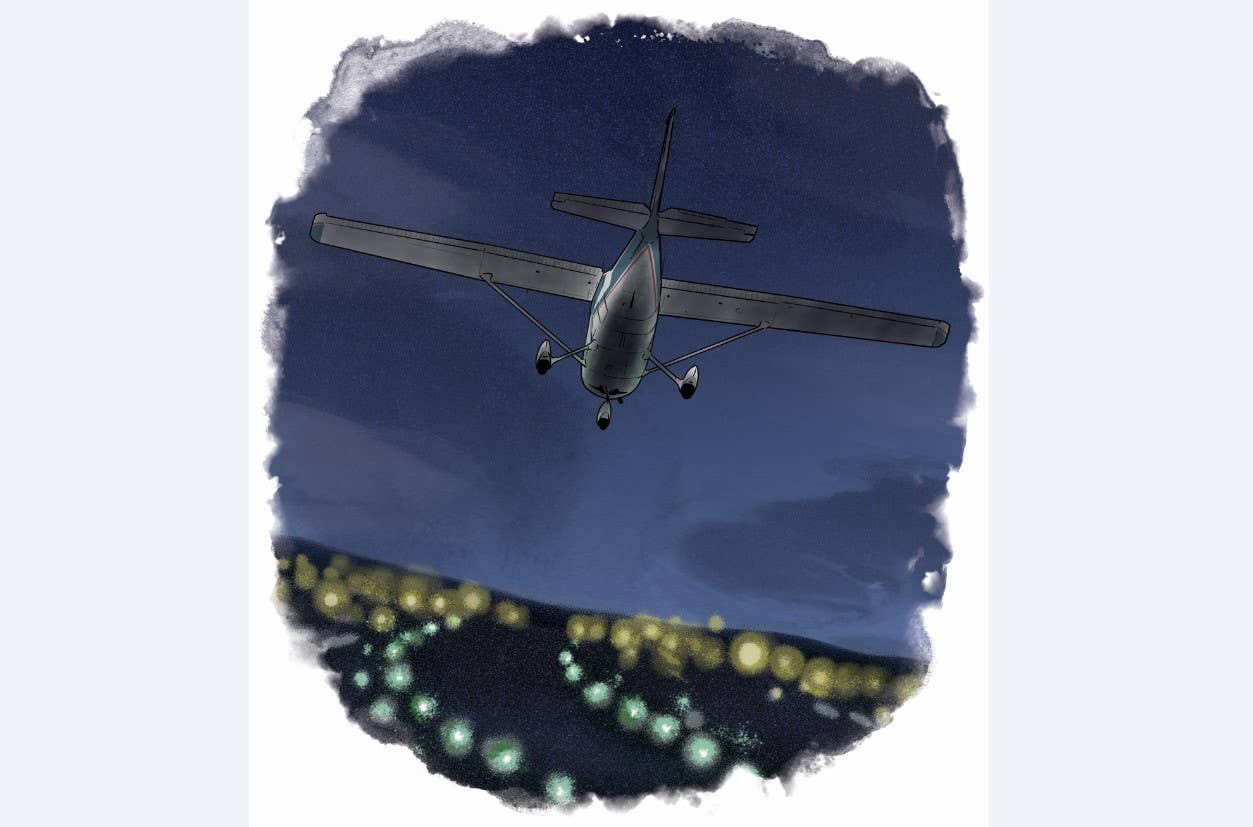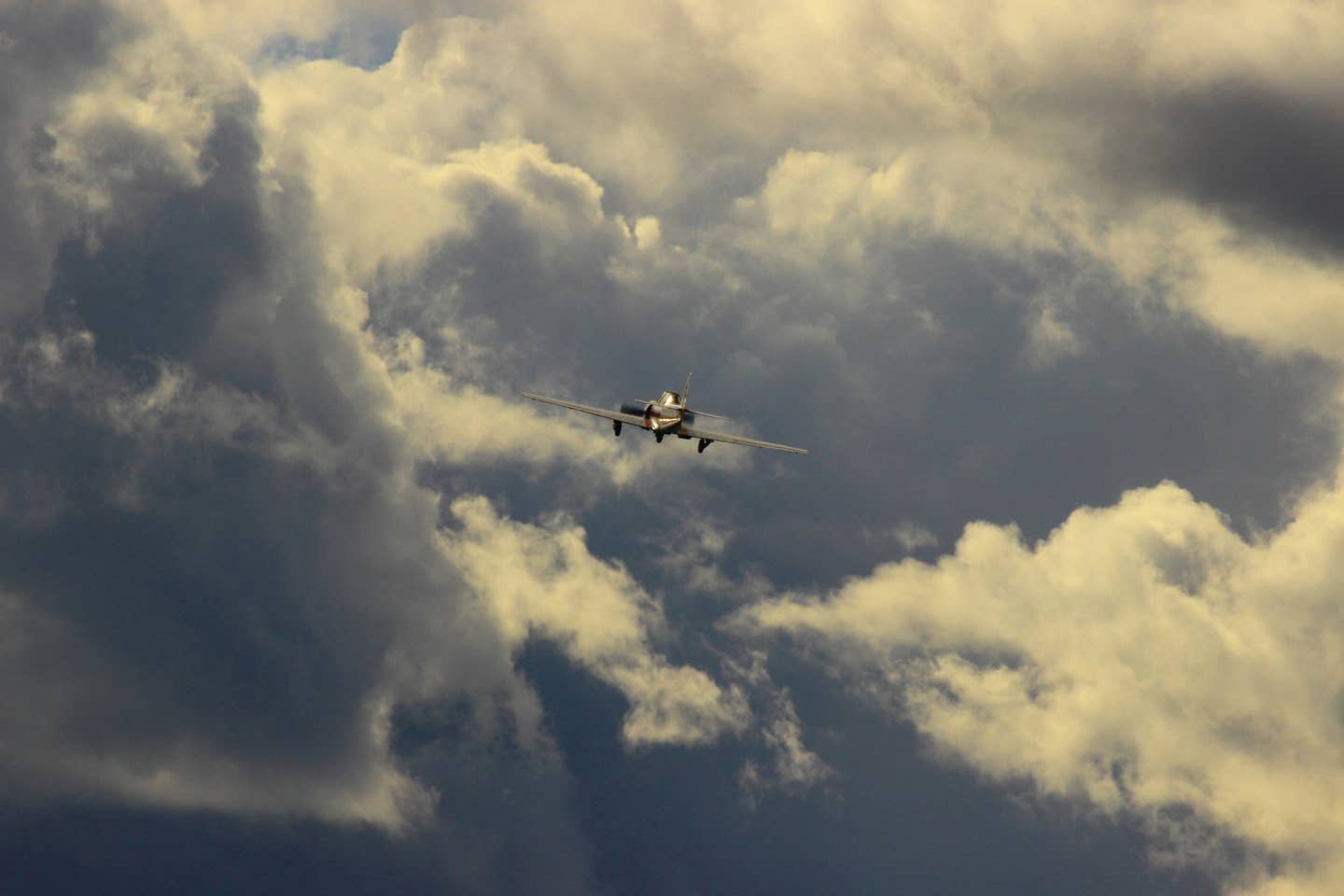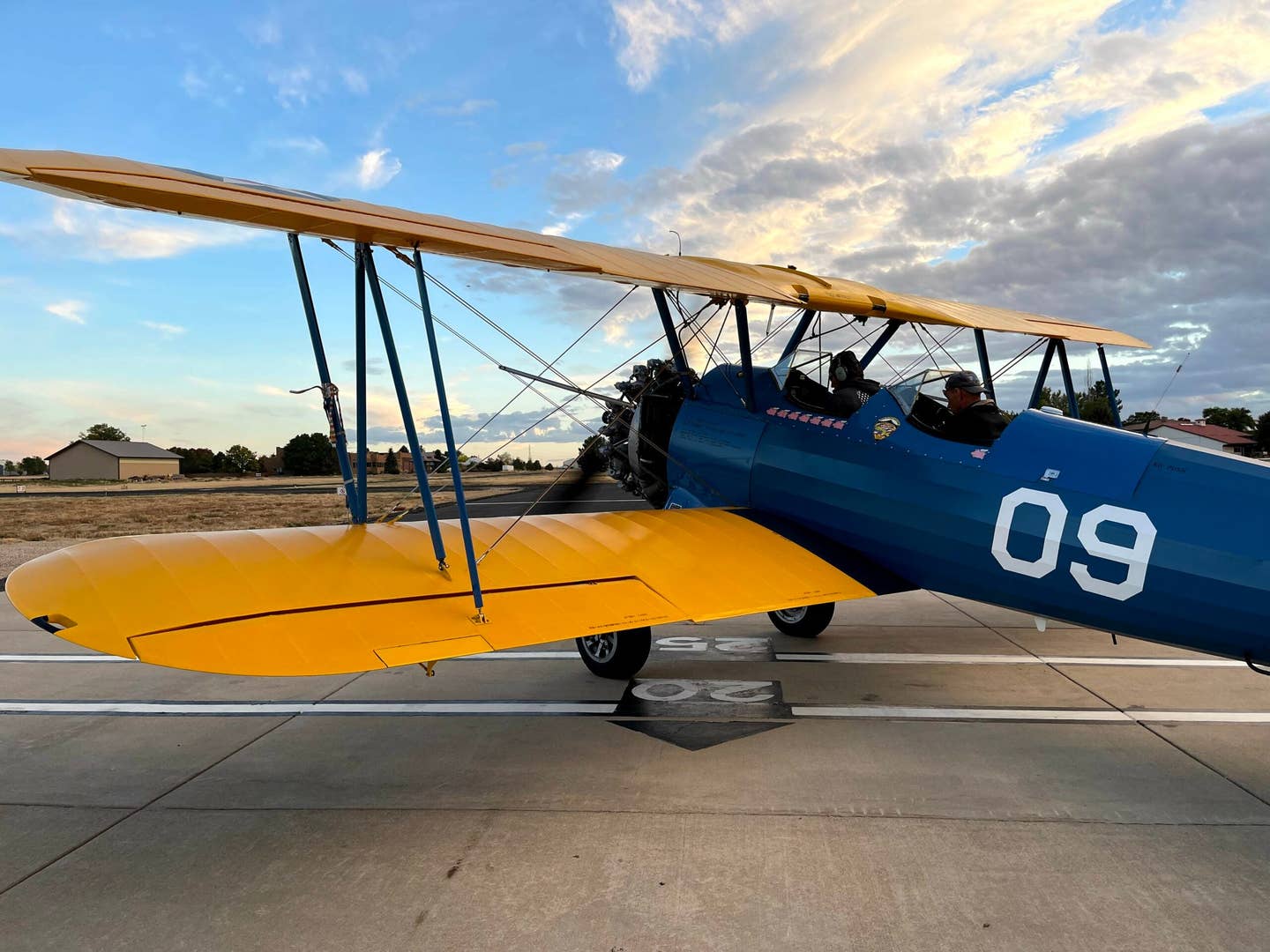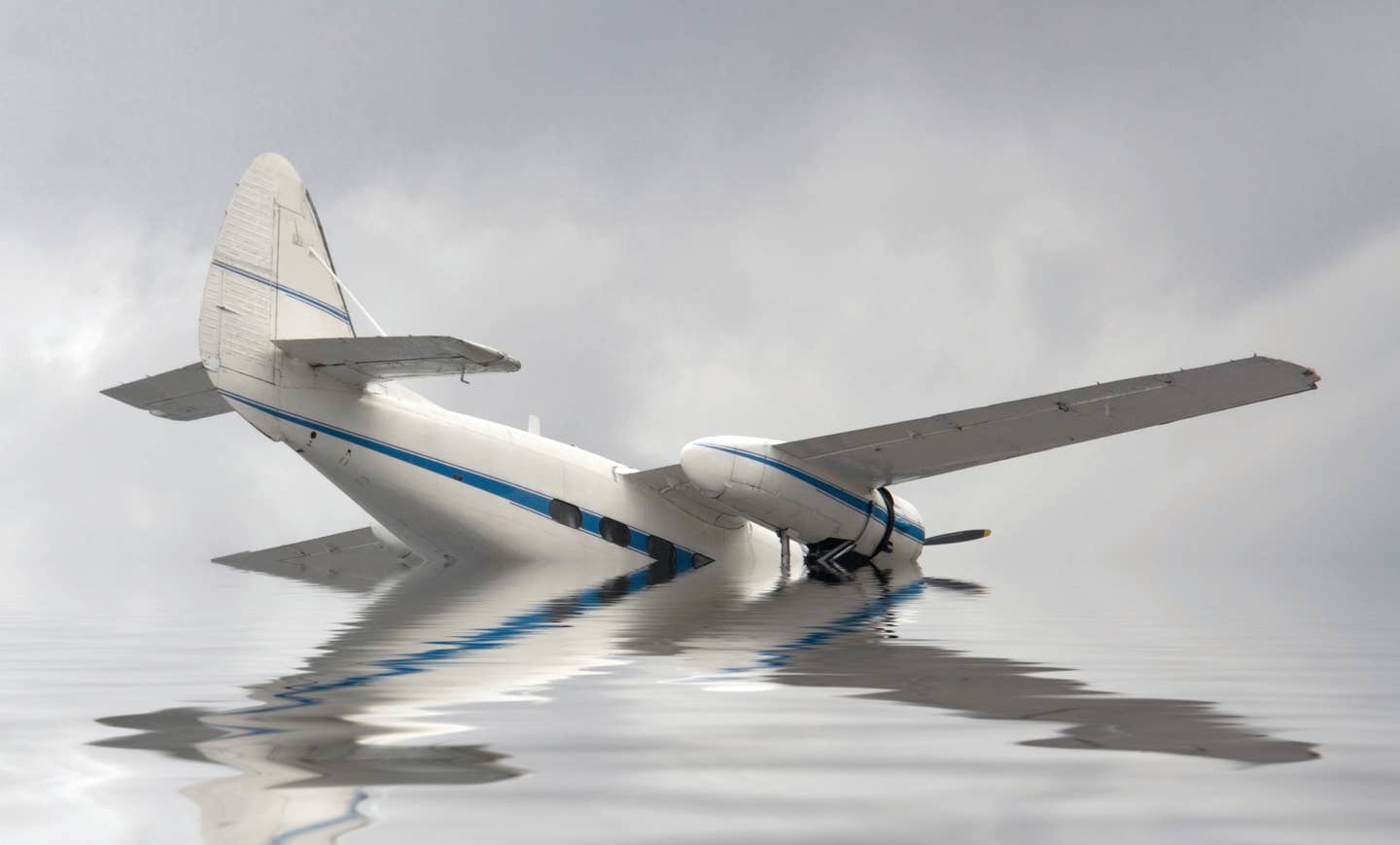Respect the Darkness of the Black Hole Departure
The black hole departure can make takeoffs challenging and sometimes downright deadly but doesn’t receive the same amount of attention as the black hole approach.
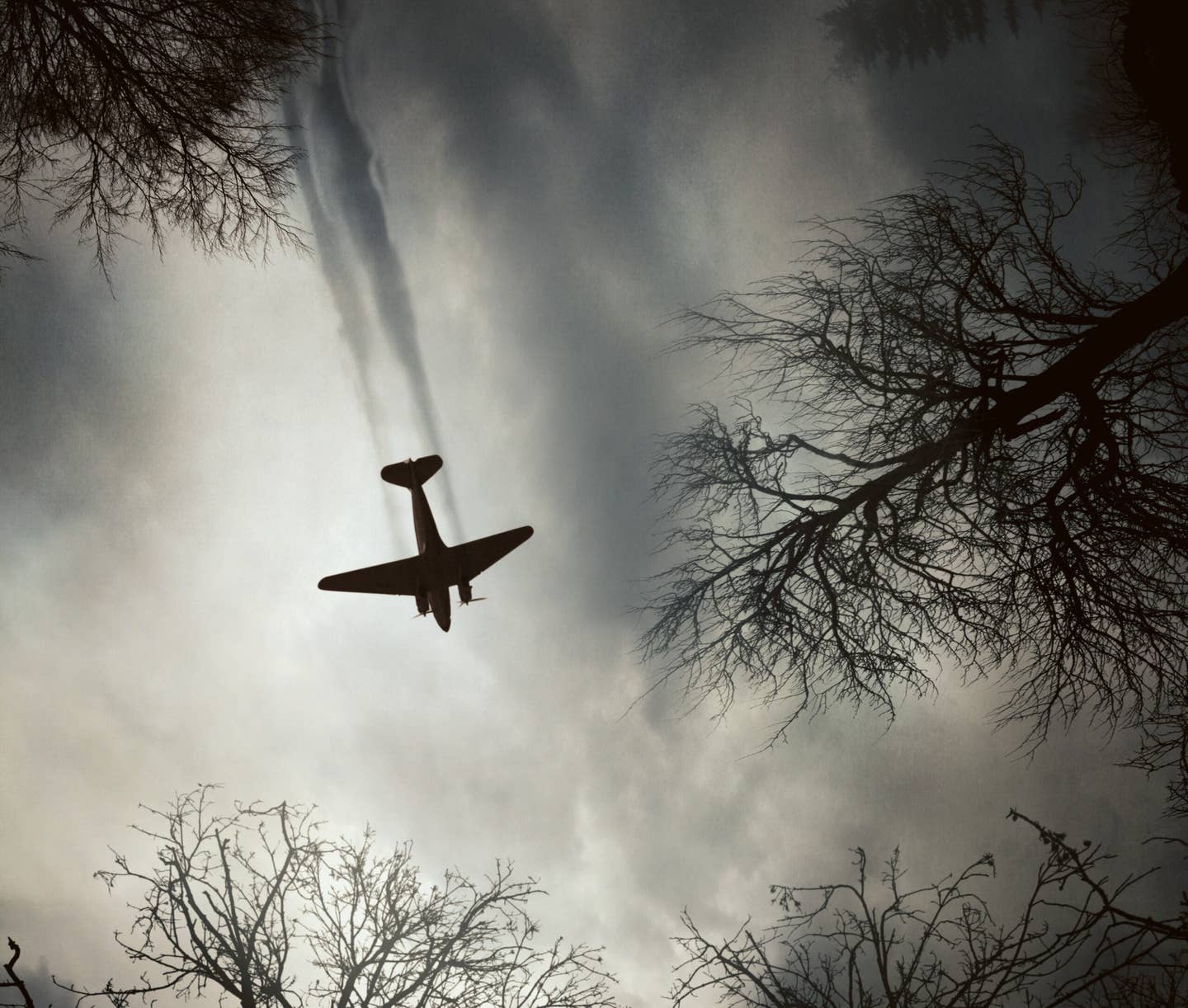
There are a handful of tips you can follow to help mitigate
risk when you face a potential black hole departure. [iStock]
Do you remember preparing for your first night flight?
Maybe you’ve read Chapter 17 of the Pilot’s Handbook of Aeronautical Knowledge and Chapter 11 of the Airplane Flying Handbook, learning about the dangers of spatial disorientation and runway illusions caused by the reduction of visual cues. Most of us read along the way, too, about the black hole approach, where a lack of visual cues on the ground make it challenging for the pilot to find the runway and fly a stable approach. Oddly enough, the other side of the black hole approach—the black hole departure—that can make takeoffs challenging and sometimes downright deadly does not receive the same amount of attention.
Perhaps it’s time that it did.
If you're not already a subscriber, what are you waiting for? Subscribe today to get the issue as soon as it is released in either Print or Digital formats.
Subscribe NowAccident at KVNC
On April 5, a commercial pilot flying a Piper Cherokee Lance took off from Venice Municipal Airport (KVNC) in Florida, destined for Albert Whitted Airport (KSPG) in St. Petersburg under a full moon. The airport sports two runways, 13/31 and 5/23. Noise-sensitive communities surround the airport, and the recommendation is that pilots use Runway 23 at night and follow a noise abatement procedure that has them maintain runway heading and climb to 1,000 feet msl at best rate of climb (VY) before heading on their way. The airport is located on the west coast of Florida, and Runway 23 puts the aircraft over the Gulf of Mexico.
The weather at the time of the flight was reported as 10 miles visibility and clear. However, security camera footage of the takeoff showed there was no discernible horizon over the dark waters of the Gulf.
According to the data track provided by the FAA, the aircraft reached an altitude of approximately 300 feet and a ground speed of about 103 knots then began a turn to the right and entered a descent. The aircraft hit the water at 136 knots and a vertical descent rate of approximately 3,000 fpm, killing the pilot and all three passengers.
While it will take several months for the National Transportation Safety Board (NTSB) to determine the probable cause of the accident, the black hole nature of the departure environment is already under review.
“This accident really drove home how insidious VFR night flight can be,” said the late Richard McSpadden, former Aircraft Owners and Pilots Association (AOPA) senior vice president and executive director of its Air Safety Institute (ASI).
Recently, the ASI took an in-depth look at this accident.
“The departure is more of a risk than the approach is, because on the approach the pilot is already on instruments,” said McSpadden in October 2023, explaining that during black hole approaches the pilot is carefully watching the airspeed indicator, heading indicator, attitude indicator, and altimeter to maintain situational awareness. “On departure, the pilot may not be expecting to be on instruments, then the darkness comes at them rather quickly—and they are not ready to transition.”
McSpadden flew the Runway 23 departure at KVNC at night to have a better understanding of the challenge. “When you take off, the coastline is at an angle,” he said. “The way the coastline falls away, you are truly completely dark really quickly, as you are over the water.”
Many pilots don’t recognize the challenge of the black hole departure, according to David St. George, the exec-utive director of the Society of Aviation and Flight Educators, a 21,000-hour charter pilot, and a designated pilot examiner. “Taking off into a black hole (dark night) is like flying into the belly of a whale—no references,” St. George said. One of the scenarios he uses for check rides is having the applicant plan a night flight that includes a black hole departure, such as out of Tampa Executive Airport (KVDF) in Florida. “First, to see if they plan a direct flight over water,” St. George said, “second, to see if they detect the hazards of departure. The airman certification standards are all about risk management.”
Over-water departures aren’t the only challenging ones, said St. George, adding that departures over dark and featureless mountainous terrain also pose challenges. McSpadden suggested that instructors prepare learners for these situations by teaching them to use the instruments during night flight because “the lack of horizon can be disorientating, and if it happens at low altitude, you are in serious trouble because the surprise factor limits reaction time.” He believed pilots should practice black hole departures in an aviation training device so they understand how to use the instruments to maintain aircraft control.
Taking McSpadden’s advice, I decided to give it a try. Using the NTSB preliminary report as a guide, I re-created the accident at KVNC in a Redbird FMX advanced aviation training device, right down to the time, date, and weather. I used a large, black tarp to block out exterior light.
McSpadden was correct—when the aircraft passes over the shoreline and the lights fall away, it is disorienting, and you need to get on the gauges quickly, just as you do for an IFR departure.
Practice Going on the Gauges
Spatial disorientation is defined as the lack of orientation with regard to the position, attitude, or movement of the airplane in space. Pilots are prone to spatial disorientation if they rely on their vestibular system (the organs in the inner ear), the somatosensory system (also known as the “seat-of-the-pants” sensation), and visual system without identifying a horizon.
In short, your body becomes confused between acceleration forces that result from gravity and maneuvering the aircraft. This can, and often does, lead to spatial disorientation. You may feel like the airplane is in straight-and-level flight when actually it is nose-high attitude and turning to the left.
Just as pilots train to identify and recover from unusual attitudes, it can behoove you to practice experiencing spatial disorientation and flying the aircraft by instruments. Do this with the help of an instructor and at appropriate altitude. You could put on a view-limiting device then close your eyes and tilt your head forward while the instructor puts the aircraft through climbs, turns, and descents to ensure you’re appropriately disoriented. Then the instructor can have you attempt to hold the aircraft on an assigned heading while climbing at VY. An exercise like this demonstrates how the body can lie to you, and it gives you confidence in using the instruments.
- READ MORE: Flying at Night: What You Need to Know
Safely in the Black Hole
There are a handful of tips you can follow to help mitigate risk when you face a potential black hole departure, though these practices and procedures help any takeoff profile. First, before you taxi onto the runway, make sure the altimeter is set to the field elevation.
In your regular flying, practice VX and VY climbs in day VFR conditions, noting the pitch angles on the attitude indicator for reference at night.
Study the sectional, airport guide, and Google Earth images of the area around the airport before you take off for better situational awareness. You can also use tools in apps like ForeFlight and Garmin Pilot to visualize terrain and obstacles in unfamiliar areas. Note the elevation of obstacles near the airport and determine what altitude the aircraft will have to be at to safely pass over them.
This last tip was impressed upon me as a CFI candidate taking off from Norm Grier Field (S36), a nontowered airport in Kent, Washington. The runway, 15/33, measures 3,288 feet by 40 feet with low intensity runway lights. The airport is surrounded by 30- to 40-foot trees, and on the north and south ends there are power lines that run perpendicular to the runway.
“You need to be at 650 feet to clear the wires,” my CFI told me.
He was correct.
Getting Out of the Hole
- Check that the altimeter is set to field elevation before takeoff.
- Practice climbs at Vx and Vy in day VFR conditions.
- Study the lay of the land via the sectional, Google Earth, ForeFlight terrain awareness, or other apps.
- Note the elevation of obstacles and high-terrain points in the departure path—and all
quadrants in case of an ATC vector or traffic avoidance course change. - If you have access to a desktop flight sim or AATD, set up a black hole departure at one of the airports noted (KVNC, KSPG, or KVDF) and experience the process.
This feature first appeared in the October 2023/Issue 942 of FLYING’s print edition.

Subscribe to Our Newsletter
Get the latest FLYING stories delivered directly to your inbox



